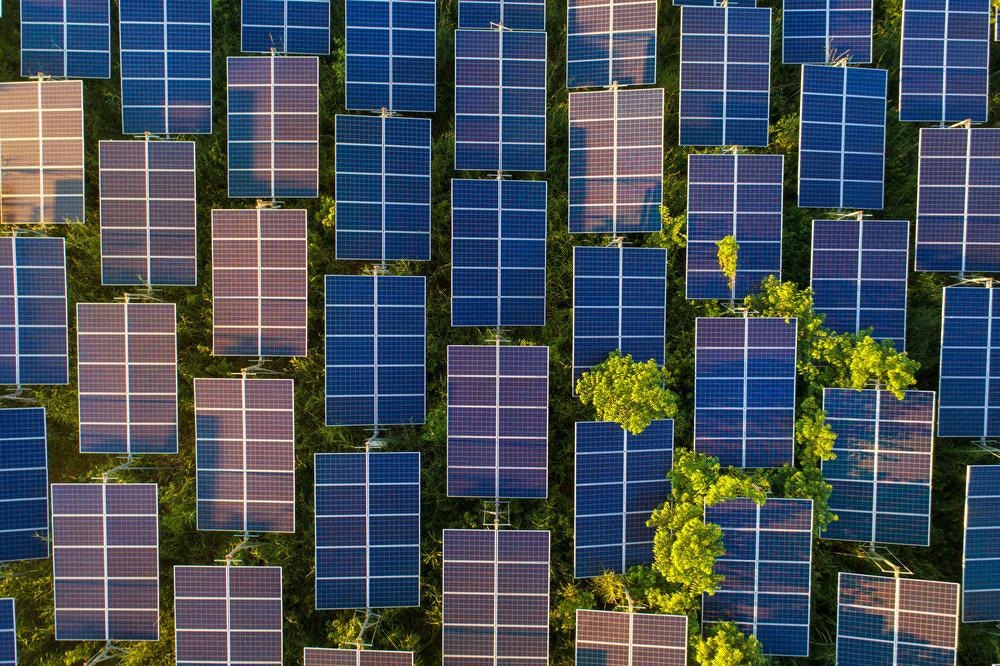Small changes can make a big difference, as researchers from Saudi Arabia recently found. By tweaking a device designed to desalinate seawater using waste heat from solar cells, they were able to boost the solar cell's performance and produce fresh water at a rate of 1.6 liters per hour. The research was published in the journal Joule on 16 June 2021.

Image Credit: Thongsuk7824/Shutterstock.com
Researchers from King Abdullah University of Science and Technology (KAUST) previously developed a photovoltaic-membrane distillation device (PV-MD) capable of producing clean water from seawater while simultaneously generating electricity.
Excess Heat Drives Distillation
Silicon photovoltaic cells typically convert a quarter of absorbed solar energy that reaches them; the rest heats the solar cell. Cooling with water does little to reduce the temperature, but the researchers realized this excess heat could be repurposed to drive water distillation and desalinate seawater. At the same time, the cell would be cooled.
Their PV-MD uses a multi-stage membrane distillation (MSMD) device consisting of four layers: a top thermal conduction layer, a hydrophilic porous layer for water evaporation, a hydrophobic porous layer for vapor permeation, and a water vapor condensation layer.
The MSMD device, fixed to the back of a photovoltaic cell, draws seawater into the layered channels. The water vaporized in the uppermost channel by the heat of the solar cell passes through a porous membrane to a lower layer, where it is redistilled using the latent heat released during vapor condensation.
Theoretical Model Provides Boost
In their latest study, Wenbin Wang and Sara Aleid helped create a theoretical model to examine the relationship between specific membrane parameters, like thickness, porosity, and solar cell hotness.
Realizing a lower solar cell temperature relies on regulating heat transfer through the hydrophobic membrane in the multi-stage device. Simply by modulating the membrane parameters, we found that utilizing a thinner hydrophobic membrane with higher porosity enables higher desalination performance and lower solar cell temperature to be achieved simultaneously.
Wenbin Wang, Postdoctoral Fellow, Water Desalination and Reuse Centre, Division of Biological and Environmental Science and Engineering, KAUST
The device now features a five-stage photovoltaic-membrane distillation evaporative crystallizer (PME). The result is a reduced solar cell temperature, accompanied by a high and stable freshwater production. In addition, electricity production increased by 8%, and evaporation of concentrated brine – an unwanted byproduct – by the evaporative crystallizer.
This elimination of the concentrated brine byproduct was just one of the issues the team had to overcome before their laboratory results could be applied to real-world applications. Others include minimizing the energy required for desalination. The researchers developed a gravity-driven system inspired by infusion technology. The seawater is fed into the solar-cell device without external pumps while a special fabric wicks away solid salts and minerals, preventing the release of toxic liquid brine.
"Because our device aims to desalinate seawater and provide electricity for off-grid communities, relying on a mechanical pump to control the flow rate of source water is not a good choice," explains Wang.
Real-world Applications
The scarcity of clean water and the energy shortage crisis are just two of the critical challenges for global sustainable development. This research is focused on providing low barrier-of-entry electricity and fresh water supplies to off-grid communities for points of consumption.
Their PV-MD is well suited and will be commercially competitive to supply water and electricity for regions suffering from economic and physical water scarcity, believes Wang.
These investigations have important implications for further understanding and advancing solar distillation. Technology such as this could enable drinkable water production in locations where it is not currently available and provide clean, renewable energy to local communities in areas like the Middle East, which accounts for 45% of the global seawater desalination.
References and Further Reading
Wang, W. et al (2021) Integrated solar-driven PV cooling and seawater desalination with zero liquid discharge, Joule. Available at: https://doi.org/10.1016/j.joule.2021.05.010. Accessed 12 August 2021.
KAUST (2021) Getting smart about desalination. EurekAlert. Available at: https://www.eurekalert.org/news-releases/924257. Accessed 12 August 2021.
Wang, W. et al (2019) Simultaneous production of fresh water and electricity via multi-stage solar photovoltaic membrane distillation, Nature Communications. Available at: https://doi.org/10.1038/s41467-019-10817-6. Accessed 13 August 2021.
Grolms, M. (2020) Turning waste heat from solar panels into a water distillation process. Advanced Science News. Available at: https://www.advancedsciencenews.com/turning-waste-heat-from-solar-panels-into-a-water-distillation-process/. Accessed 13 August 2021.
Disclaimer: The views expressed here are those of the author expressed in their private capacity and do not necessarily represent the views of AZoM.com Limited T/A AZoNetwork the owner and operator of this website. This disclaimer forms part of the Terms and conditions of use of this website.